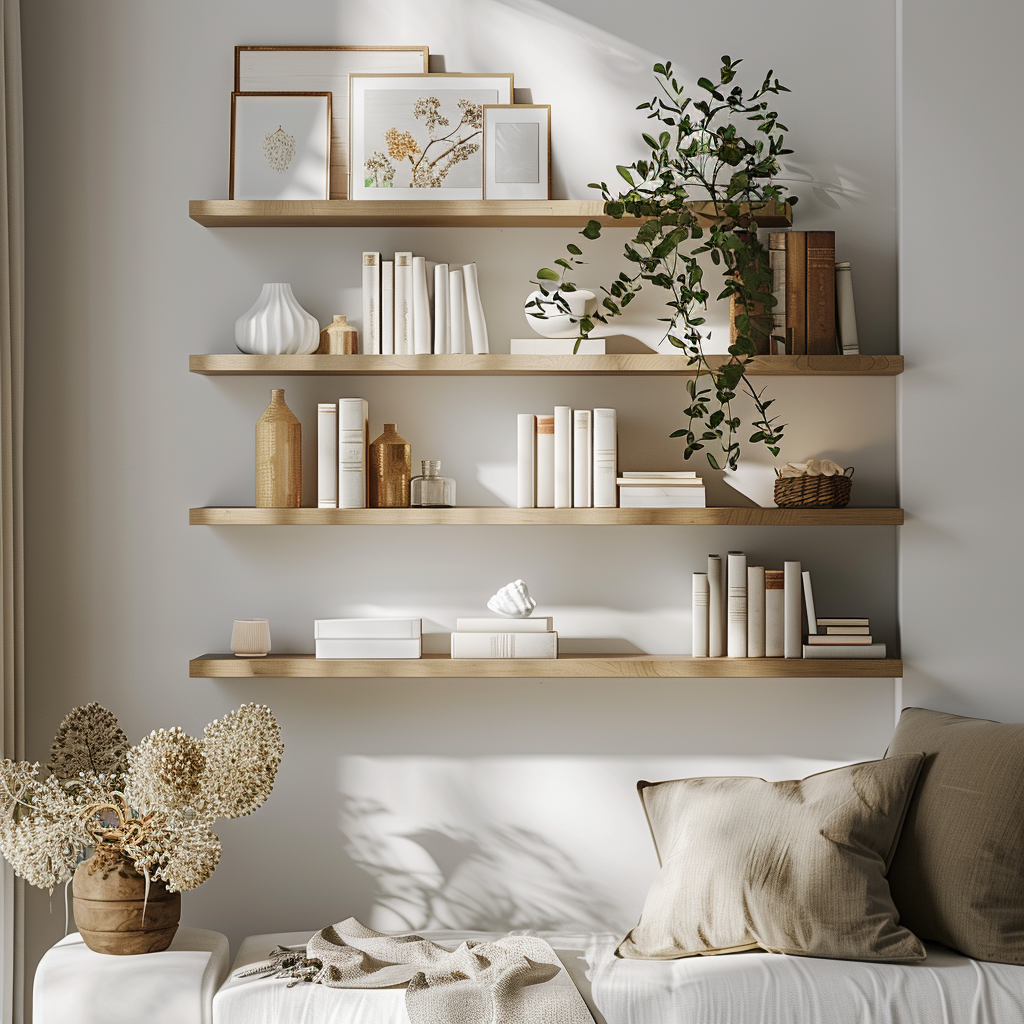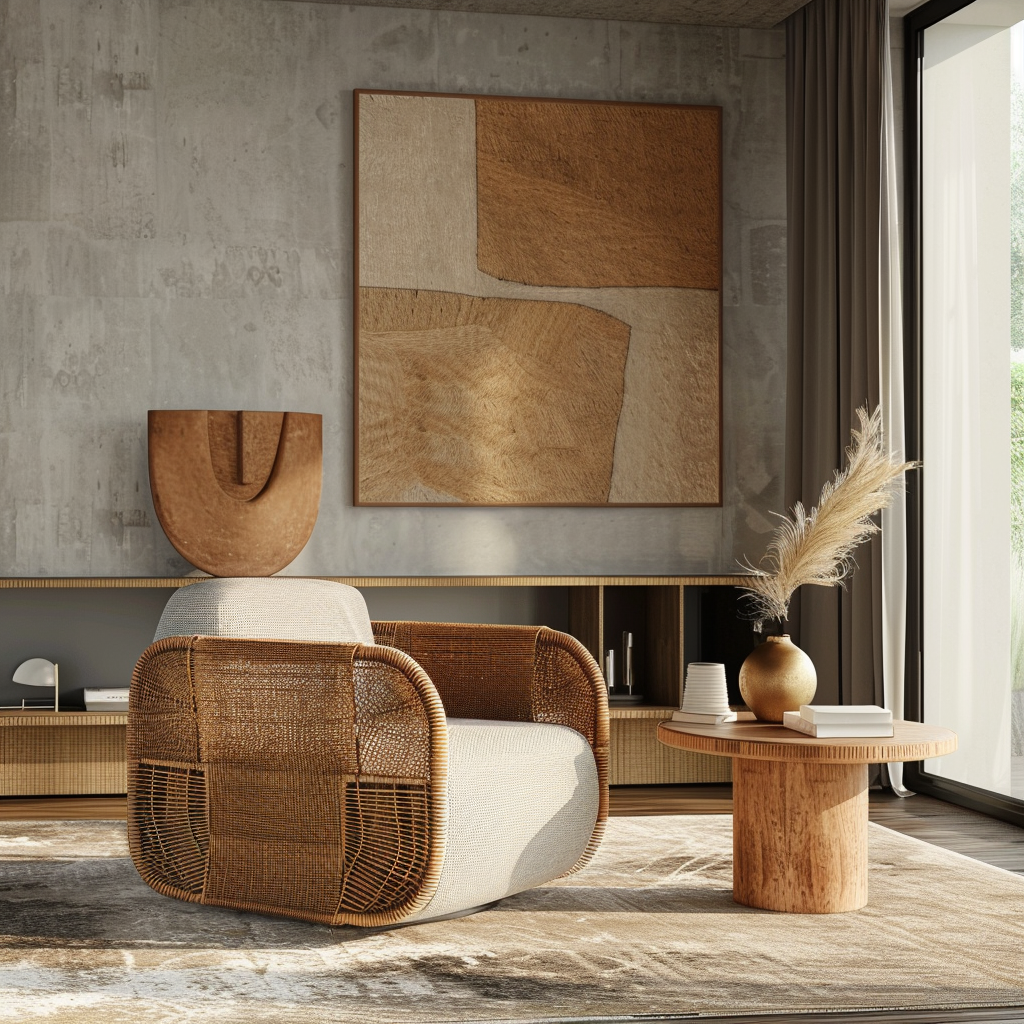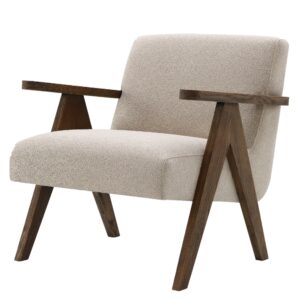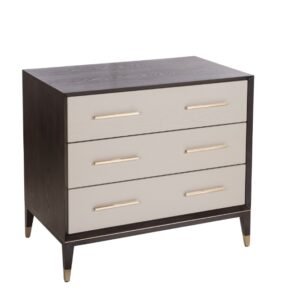Trends
MAXIMIZING SPACE AND STYLE: CREATIVE CORNER IDEAS FOR YOUR HOMES
Unveil Luxury, Unleash Comfort – Eclectic Niche.
In home design, creative corner ideas can be elusive as corners often pose both challenges and opportunities. These corner spaces can sometimes be tricky to work with, but they also offer great potential for creativity and functionality. One of the key aspects of designing a creative corner in the home is to carefully consider how furniture is placed, ensuring that it not only serves a functional purpose but also enhances the overall aesthetic appeal of the room. This balance between functionality and aesthetics is crucial in making the most out of corner spaces in home design.

Understanding Corner Spaces
Corner spaces in interior design refer to the areas where two walls meet at an angle, creating a triangular or L-shaped space. These spaces are often overlooked but can be valuable assets when utilized effectively in home design. Understanding corner spaces involves recognizing their potential, challenges, and benefits in creating functional and aesthetically pleasing environments. Corner spaces are the often-neglected areas where walls intersect, forming angles that are typically unused or underutilized in home design. These spaces can be found in various rooms such as living rooms, bedrooms, kitchens, and hallways. They include floor corners, wall corners, and ceiling corners, each offering unique design opportunities.
Challenges:
- Limited Space: One of the main challenges of corner spaces is their limited size and often irregular shape. This can make it challenging to find furniture or decor that fits seamlessly into these spaces without overcrowding the room.
- Visibility: Corners can sometimes be overlooked or underutilized, leading to wasted space that could otherwise be utilized for practical or decorative purposes.
- Traffic Flow: Improper placement of furniture in corners can disrupt the natural flow of traffic within a room, making it feel cramped or difficult to navigate.
- Awkward Layouts: Another major challenge with corner spaces is their awkward layout, making it difficult to place furniture or decor items seamlessly.
- Limited Accessibility: Depending on the size and shape of the corner, accessing and utilizing the space effectively can be challenging.
- Visual Disconnection: Corners can create visual breaks in a room’s flow if not integrated well with the overall design.
- Potential for Clutter: Unused corners may become spaces where clutter accumulates if not properly designed or organized.
Benefits:
- Maximizing Space: Despite their challenges, corner spaces offer valuable opportunities to maximize space utilization, especially in smaller rooms or apartments where every inch counts.
- Creating Focal Points: Well-designed corner areas can serve as focal points in a room, drawing attention and adding visual interest.
- Versatility: Corner spaces can be versatile, serving multiple functions such as storage, seating, or decorative displays.
- Enhancing Functionality: Corner spaces can be transformed into functional areas such as reading nooks, home offices, or storage solutions.
- Improving Flow: Properly designed corners can improve the flow and circulation within a room, enhancing the overall comfort and usability of the space.
- Adding Dimension: Incorporating decor or furniture in corners adds depth and dimension to the room, making it feel more spacious and inviting.
Creating Functional Corners in Your Home
Functional corners in your home offer unique opportunities to maximize space while adding practicality and style. Let’s explore how you can transform these corners into functional and inviting areas, focusing on reading nooks, entryway corners, and window nooks.
1. Reading Nooks:
Reading nooks are cozy retreats where you can unwind with a good book. Here’s how to create the perfect reading corner:
Comfortable Seating: Start with comfortable seating such as a plush armchair, a bean bag chair, or a chaise lounge. Soft cushions and throws add coziness.
Good Lighting: Ensure adequate lighting for reading. Place a floor lamp or a table lamp near the seating area. Consider adjustable lighting options for different reading preferences.
Book Storage: Incorporate bookshelves, floating shelves, or built-in storage near the reading nook for easy access to books and magazines. Organize books by genre or author for convenience.
Small Table or Ottoman: Add a small table or ottoman beside the seating for placing beverages, snacks, or reading essentials like a bookmark or reading glasses.
2. Entryway Corners:
Entryway corners often go underutilized but can be transformed into functional storage and organization hubs:
Storage Benches or Cabinets: Install storage benches or cabinets in entryway corners to store shoes, bags, umbrellas, and other outdoor essentials. Opt for designs with compartments or drawers for organized storage.
Wall-Mounted Hooks: Utilize wall space with wall-mounted hooks for hanging coats, hats, keys, and bags. This keeps the entryway clutter-free and ensures easy access to everyday items.
Mirror: Include a mirror in the entryway corner for last-minute checks before leaving the house. Choose a mirror with a decorative frame to add style to the space.
Decorative Elements: Enhance the entryway corner with decorative elements like artwork, wall decals, or a small indoor plant to create a welcoming atmosphere.
3. Window Nooks:
Window nooks offer a tranquil space to enjoy natural light and scenic views. Here’s how to make the most of your window nook:
Window Seat: Build a window seat with cushions and pillows for a comfortable and functional space. Choose durable fabrics that are easy to clean.
Natural Light: Utilize the natural light from the window for reading, relaxing, or indoor gardening. Position the seating to capture the best sunlight during the day.
Storage Underneath: Incorporate storage underneath the window seat for additional functionality. Use baskets, bins, or drawers to store blankets, books, or gardening supplies.
Cozy Elements: Add a throw blanket, a potted plant, or a small side table with a cup of tea to create a cozy ambiance in the window nook.

Decorative Corners: Enhancing Your Home's Aesthetic Appeal
Decorative corners are often overlooked in home design but can be transformed into captivating focal points with the right approach, you can elevate the style quotient of your home while optimizing every inch of available space. Experiment with different combinations here:
Corner Shelves and Storage Solutions
Corner shelves are versatile additions that not only enhance the visual appeal of corners but also provide functional storage and display options. Here are some creative ways to utilize corner shelves:
Display Decorative Items: Install corner shelves to showcase decorative items such as figurines, vases, or collectibles. This adds personality to the space and highlights your unique style.
Showcase Plants: Utilize corner shelves for displaying indoor plants. Choose a mix of greenery with varying heights and textures to create an inviting and lively atmosphere.
Book Display: If you’re a book lover, use corner shelves to organize and display your favorite books. Arrange them creatively along with decorative accents for a stylish look.
Floating Shelves: For a modern and minimalist aesthetic, opt for floating shelves. These sleek shelves create an illusion of space and are perfect for displaying small decorative pieces or plants.
Custom-Built Shelving: Consider custom-built shelving solutions tailored to your corner space. This allows you to maximize vertical storage while ensuring a seamless integration with your existing decor.
Wall Galleries and Art Displays
Transforming a corner into a captivating wall gallery or art display adds depth and character to your home. Here are steps to create an engaging visual showcase:
Curated Wall Gallery: Start by selecting a mix of artwork, photographs, and decorative mirrors that complement each other. Experiment with different frame styles, sizes, and arrangements to create visual interest.
Frame Arrangement: Arrange the frames on the wall in a cohesive yet dynamic layout. You can opt for a symmetrical arrangement for a classic look or a more eclectic layout for a modern vibe.
Lighting Accent: Enhance your wall gallery with wall-mounted lighting fixtures. Position them strategically to highlight specific artworks and create a warm ambiance in the corner.
Sculptures and Decorative Elements
Incorporating sculptures and other decorative elements adds texture and dimension to corner spaces. Here’s how to integrate these elements effectively:
Sculptural Pieces: Choose sculptures or art pieces that complement your overall theme and color scheme. Consider materials like wood, metal, or glass for a diverse visual impact.
Vases and Centerpieces: Incorporate decorative vases or centerpieces on corner tables or shelves. Play with different shapes, sizes, and colors to add a pop of interest to the space.
Mix of Materials: Combine various materials such as wood, metal, and glass to create a dynamic and visually appealing corner. Mix smooth surfaces with textured elements for contrast.
-
Sale!

RV Astley
Aisone Dark Brass Finish Floor Lamp
£434Original price was: £434.£395Current price is: £395. Add to cart -
Sale!

RV Astley
Arnaude Chest of Drawers
£1,080Original price was: £1,080.£983Current price is: £983. Add to cart -

North West
Modello Gold Finish Wood Panel Wall Art
£462 Add to cart
Practical Enhancements
Practical enhancements in corners encompass a range of elements, from lighting solutions to mirrors and the introduction of indoor plants. This is how they can be used in corners to creatively elevate your home’s aesthetic and functionality.
1. Lighting Solutions
Lighting plays a crucial role in setting the mood and ambiance of a space. In corners, where natural light may be limited, strategic lighting solutions can brighten up the area and create a welcoming atmosphere.
Corner Floor Lamps: Placing a floor lamp in a corner not only illuminates the space but also adds a touch of elegance. Opt for sleek designs that complement your existing decor and provide sufficient light for reading or accentuating nearby furniture pieces.
Pendant Lights: Suspended pendant lights are excellent for creating a focused light source in corners. Choose adjustable pendants to direct light where needed, such as highlighting a piece of art or a decorative corner shelf.
Wall Sconces: Wall-mounted sconces are ideal for adding ambient lighting to corners. They come in various styles, from modern to vintage, allowing you to align them with your interior theme. Consider dimmable options for versatile lighting control.
Smart Lighting Options: Embrace technology with smart lighting solutions. Smart bulbs or fixtures that can be controlled via apps or voice commands offer convenience and energy efficiency. Program different lighting scenes for various activities or times of the day.
2. Mirrors for Depth and Style
Mirrors are renowned for their ability to visually expand spaces and add a touch of sophistication. When strategically placed in corners, mirrors can transform the perception of room dimensions and enhance the overall style.
Creating Illusion of Space: Install mirrors in corners to create the illusion of more space. Large, full-length mirrors or mirror panels can make rooms appear larger and airier, perfect for smaller homes or rooms with limited natural light.
Decorative Frames and Shapes: Choose mirrors with decorative frames or unique shapes to add personality to your corners. Vintage frames, geometric designs, or ornate detailing can become statement pieces while serving a functional purpose.
Mirrored Furniture and Accessories: Extend the reflective effect by incorporating mirrored furniture or accessories into corner spaces. Mirrored side tables, consoles, or decorative trays not only reflect light but also add a touch of glamour and sophistication.
3. Indoor Plants for Greenery
Bringing nature indoors is a timeless trend that adds freshness, color, and vitality to any space. Corner areas, often underutilized, can become vibrant green sanctuaries with the right selection of indoor plants.
Plant Selection: Choose indoor plants that thrive in low-light conditions for corners that receive limited natural light. Examples include snake plants, pothos, peace lilies, and ferns. Consider the size and growth habits of plants to ensure they fit comfortably in corners.
Display Options: Utilize plant stands, hanging planters, or wall-mounted pots to display plants vertically in corners. This not only saves floor space but also adds visual interest and dimension to the area. Mix and match plant types and sizes for a dynamic display.
Air Purification: Indoor plants not only enhance aesthetics but also contribute to air purification. They absorb toxins and release oxygen, creating a healthier indoor environment. Place air-purifying plants like spider plants or peace lilies in corner spaces.

Cozy Corner Ideas
Creating cozy corners in your home is not just about adding comfort; it’s about transforming unused spaces into inviting retreats that maximize both space and style. Among the various types of cozy corners, fireplace corners, seating corners, and relaxation corners stand out for their ability to enhance the ambiance and functionality of a room.
1. Fireplace Corners:
Fireplace corners exude warmth and comfort, making them ideal spots for relaxation and gatherings. Here’s how to create a cozy fireplace corner:
Comfortable Seating: Start by selecting comfortable seating options such as plush armchairs or a loveseat that complements the fireplace’s style. Arrange them to face the fireplace, creating a cozy conversation area.
Rugs and Throws: Layer soft rugs and cozy throws to add warmth and texture to the space. Opt for earthy tones or rich colors that harmonize with the fireplace’s surroundings.
Decorative Screens or Mantel Decor: Enhance the fireplace focal point with decorative screens, art pieces, or a beautifully styled mantel. Incorporate elements like candles, vases, or framed artwork to create visual interest.
Maximizing Warmth: Arrange furniture to maximize warmth from the fireplace while ensuring safety and comfort. Consider placing a small side table nearby for drinks or books.
2. Seating Corners:
Seating corners are versatile spaces that can be designed for relaxation, reading, or casual gatherings. Here’s how to craft a stylish and functional seating corner:
Accent Chairs or Corner Sofas: Choose accent chairs or a corner sofa that complements your room’s style and color palette. Opt for upholstery that is both comfortable and durable.
Comfortable Accessories: Add cushions, throws, and small tables to enhance comfort and functionality. Incorporate textiles and materials that add warmth and texture to the seating area.
Lighting Solutions: Incorporate floor lamps or pendant lights to provide ambient lighting for reading or relaxing in the evenings. Consider adjustable lighting options to create different moods.
3. Relaxation Corners:
Designated relaxation corners are tranquil spaces dedicated to unwinding and rejuvenation. Here’s how to create a calming and personalized relaxation corner:
Comfortable Seating: Select a comfortable chair or chaise lounge that invites relaxation. Consider ergonomic designs and soft upholstery for optimal comfort.
Atmospheric Elements: Include a floor lamp to provide soft, ambient lighting. Enhance the atmosphere with a music player or speakers for soothing background sounds.
Cozy Textiles: Layer the seating area with cozy textiles like blankets, cushions, and soft rugs. Choose calming colors and materials that promote relaxation.
Personal Touches: Personalize the space with artwork, plants, or personal mementos that reflect your style and interests. Consider adding a small side table for beverages or reading materials.

Tips for Maximizing Corner In Your Home Creatively
Corner spaces often pose a unique challenge in home design, but with the right approach, they can become valuable and stylish assets. Implementing creative corner ideas requires a thoughtful consideration of factors like
Considerations for Traffic Flow and Accessibility
Clear Pathways: When placing furniture in corners, ensure there are clear pathways for movement. Avoid blocking major walkways or hindering access to doors and windows.
Allow Space: Leave enough space around furniture pieces in corners to facilitate easy navigation and prevent a cramped feel. This is especially important in high-traffic areas like the living room or kitchen.
Consider Door Swing: Take into account the swing of doors when positioning furniture near entryways or closets. Ensure that doors can open and close without obstruction.
Adjustable Furniture: Opt for furniture with adjustable components, such as shelves, drawers, or extendable tables, to accommodate varying space requirements and enhance accessibility.
Lighting Solutions: Incorporate lighting solutions that illuminate corners without creating glare or shadows. Consider adjustable floor lamps or wall-mounted lights to enhance visibility and ambiance.
Balancing Functionality with Aesthetics
Purposeful Placement: Determine the primary function of each corner space and tailor furniture placement accordingly. For example, create a cozy reading nook with a comfortable chair and a small bookshelf.
Multifunctional Furniture: Choose multifunctional furniture pieces that serve dual purposes, such as storage ottomans, convertible sofas, or nesting tables. This maximizes functionality while minimizing clutter.
Color and Texture: Coordinate furniture colors and textures to create a cohesive and harmonious look. Use complementary tones and materials that blend seamlessly with the overall decor scheme.
Scale and Proportion: Consider the scale and proportion of furniture in relation to the corner space. Avoid overcrowding by selecting appropriately sized pieces that fit the available area without overwhelming it.
Visual Focal Points: Use corners as visual focal points by incorporating statement pieces or decorative elements. This could be a striking artwork, a unique sculpture, or a decorative plant arrangement.
Mixing and Matching Furniture Styles and Materials
Eclectic Mix: Embrace an eclectic mix of furniture styles and materials to add visual interest and personality to corner spaces. Combine modern and traditional pieces for a dynamic look.
Texture Play: Experiment with different textures, such as wood, metal, glass, and fabric, to add depth and dimension to corners. Mix smooth surfaces with textured finishes for tactile appeal.
Contrast and Balance: Create visual contrast by pairing contrasting furniture styles or materials. Balance bold statements with subtle accents to achieve a harmonious overall aesthetic.
Theme Integration: Integrate furniture corner ideas seamlessly into the existing theme or style of your home decor. Ensure that corner pieces complement surrounding furniture and decor elements.
Functional Coherence: While mixing and matching, maintain functional coherence by prioritizing comfort, usability, and practicality. Avoid sacrificing functionality for the sake of aesthetics alone.
Creative corner ideas offer endless possibilities for maximizing space and style in home furniture. By balancing these factors and embracing creativity, you can transform overlooked corners into functional and stylish focal points in your home. Whether it’s creating cozy reading nooks, organizing a storage corner efficiently, or designing multifunctional spaces, the key is to experiment, personalize, and enjoy the process of transforming your home’s corner spaces. Embrace creativity, make the most of every inch, and turn those overlooked corners into captivating focal points that elevate your home’s overall design. Remember, the key to successful implementation of furniture corner ideas lies in finding the right balance between practicality and visual appeal while making the most of every inch of space in your home.






